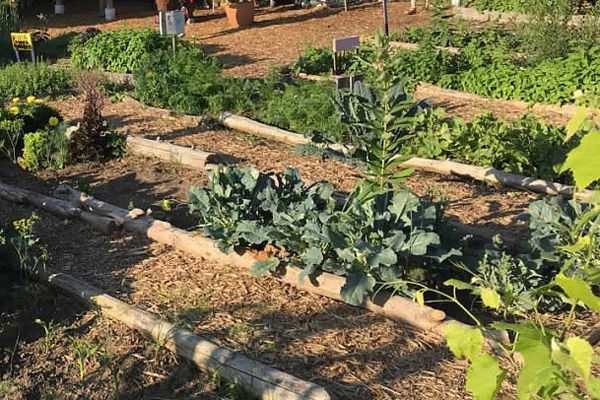A Biased View of City Blooming
A Biased View of City Blooming
Blog Article
Some Known Factual Statements About City Blooming
Table of ContentsThe Of City BloomingGetting The City Blooming To WorkThe Only Guide for City BloomingMore About City BloomingFascination About City Blooming
Intrigued in expanding food for sale in the City of Chicago? Below is a checklist of frequently asked inquiries pertaining to the rules and guidelines that growers must consider when intending a metropolitan farming project.
The zoning modification does not customize any type of various other codes dealing with composting, structure licenses, purchasing or leasing City owned home, business licenses or ecological contamination. There are existing codes that control these issues and they remain in full impact and might be applicable to your task. Area gardens are typically had or taken care of by public entities, civic companies or community-based organizations and preserved by volunteers.
Urban ranches expand food that is meant to be offered, either on a nonprofit or for-profit basis. Due to their business objective, urban ranches need a business license.
About City Blooming
The amount of garden compost product can not surpass 25 cubic yards at any offered time according to the requirements in 7-28-715 of the City's Municipal Code. Because the dirt at many brand-new garden websites needs amending, compost, soil, wood chips, or various other materials can be gotten to build or improve the growing space.

If a building permit is called for after that the hoophouse will certainly be taken into consideration an accessory structure. You can learn even more regarding the structure license demands by contacting the Division of Structures. The 25,000-square-foot dimension limit is intended to stop a single area garden from controling a given block or interfering with the block's existing property or business personality.
The limitation does not use to gardens situated in Public Open Area (POS) districts. Can there be more than one neighborhood garden that is 25,000 square feet on a solitary block? Secure fencing is not called for, nevertheless, gardens that have large vehicle parking locations might be called for to install fence or various other landscape design attributes.
9 Simple Techniques For City Blooming
B1 & B2 districts need that all industrial use activities be performed inside. R areas limit business activity. The regulations reflect the objective and intent of the Zoning Code. Is fencing required for urban ranches? Yes. Fencings might be needed, together with landscape design and screening, for sure parking lot and exterior job or storage space areas depending on location and the specific activity happening.
Urban farms call for building permits and zoning approvals prior to building (balcony and patio garden design). Various other forms of city testimonial might be needed depending on certain structures, activities, dimension, landscape design, licensing, public health and stormwater monitoring issues.
The Department of Company Matters and Consumer Defense can help identify the specific type of organization permit that's called for. Off street car park is required for many business projects in Chicago. The needed number of vehicle parking spaces is based on the number of staff members working on website and not the square video of the growing space.
More About City Blooming

Yes. A city farm can offer garden compost product created on website, nevertheless, the operation must comply with the laws in 7-28-715 of the Chicago Municipal Code. Yes. Aquaponic systems are allowed inside on urban ranches in several zoning districts. Nonetheless, a zoning review and structure authorization is required in order to install frameworks or systems and a business license is called for as explained above.
Up to five hives or colonies of honey may be kept as an accessory usage. Beekeepers should register with the Illinois Department of Farming. To find out more concerning the proposed zoning amendment you may contact the Division of Housing and Economic Development, Bureau of Preparation and Zoning at 312.744.8563.
Farming in cities and city locations A city ranch in Chicago. Urban agriculture refers to numerous practices of growing. https://city-blooming-46604195.hubspotpagebuilder.com/blog/city-gardening-cultivating-green-spaces-in-urban-areas, handling, and distributing food in metropolitan areas. The term also relates to the area tasks of animal husbandry, click this link aquaculture, beekeeping, and cultivation in a city context. Urban agriculture is differentiated from peri-urban agriculture, which happens in rural areas at the side of suburbs.
City Blooming for Dummies
, who look for to form social networks established on a common values of nature and area holism. These networks can establish by method of formal institutional support, coming to be integrated right into local town preparation as a "change community" movement for sustainable metropolitan advancement.
The more direct accessibility to fresh vegetable, fruit, and meat products that might be become aware through metropolitan agriculture can boost food protection and food security while decreasing food miles, resulting in reduced greenhouse gas exhausts, thereby adding to environment change mitigation. Some of the first evidence of urban agriculture originates from Mesopotamia.
Report this page